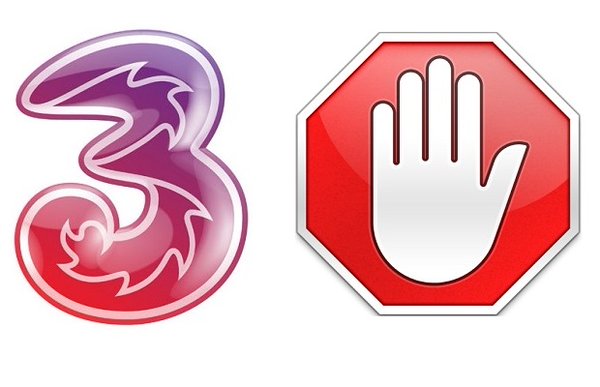With Three starting its ad blocking trial this week, Andrew Darling Blis Communications Director, argues why this will not be successful, and how the advertising industry can address the challenge of ad blockers.
Mobile operator Three has started its ad-blocking trial this week, providing the service to a number of customers who have been recruited to take part. According to Tom Malleschitz, Chief Marketing Officer at Three U.K., the goal is to give customers more “control, choice and transparency” over the ads they see.
This is divorced from reality in several important ways. There are many reasons why trying to fix these issues in the network will never work:
• First, 50-90 percent of smartphone use, and probably 90-95 percent of tablet use is over WiFi – and almost exclusively WiFi not provided by mobile network operators. Therefore, consumers will still get ads on their phones most of the time.
• Second, the fastest-growing part of mobile advertising is in-app. And while some in-app traffic might be block-able, the “native” ads such as Facebook’s in-timeline ads won’t be. Facebook blends them in at the server, and encrypts it all. That’s not going to change, apart from becoming ever more-sophisticated.
• Third, people who really want ad-blocking are likely to do it themselves, either with an app or browser-capability, or perhaps even in the OS. That way they can block ads on WiFi too.
• Fourth, any network-level solution is held hostage to future modifications in Android and iOS which offer work-around options for advertisers. That might not be a bad thing, in that it could cut down on some of the worst pop-up offenders or most-egregious “cookie monsters”, but it won’t reduce the overall amount of ads.
• Fifth, advertising and B2C engagement is changing anyway. Some of it is moving to apps, and some is moving to ads/interactions in messaging platforms e.g. ‘conversational commerce.
• Sixth, it risks all manner of embarrassing or legally-questionable side-effects. There will be false positives (blocking things that aren’t ads) and false negatives (failing to blocks ads at all). What happens when Operator A blocks an ad from Operator B, and the competition authorities take a dim view? Or blocks a government ad for submitting tax returns on time, or a charity’s disaster appeal?
The bottom line is that screaming headlines in stories about “the risk to Internet companies’ business models” are basically nonsense. However, there are possible upsides to the rise of ad blockers.
Their widespread adoption can, and should, be seen as a call to arms for marketers. We know that consumers do not appear to object to advertising; 71 percent of ad block users are saying they would proactively whitelist sites that meet acceptable criteria. It is ads considered to be visual clutter, due to poor quality and irrelevance, which drive consumers to block ads on mobile. The responsibility therefore lies with the industry to ensure it is serving the right adverts to the right people, at the right time and in the right place.
By Andrew Darling
Communications Director
Blis

